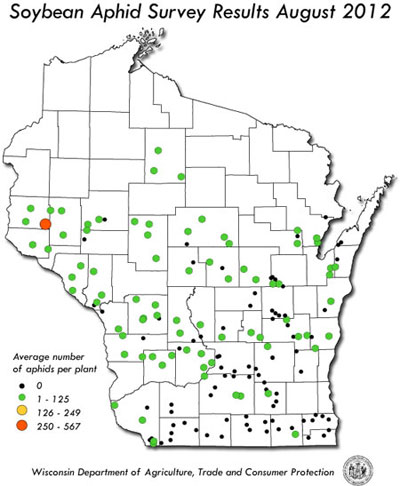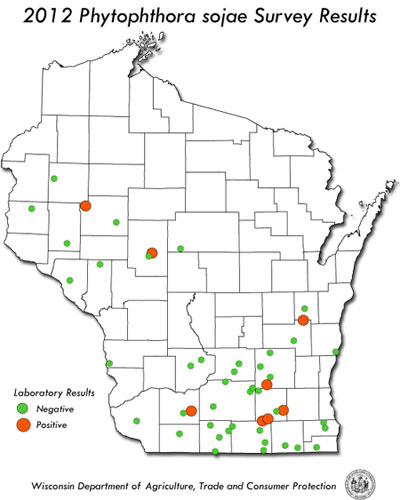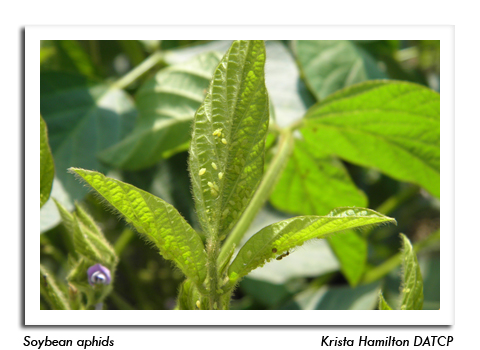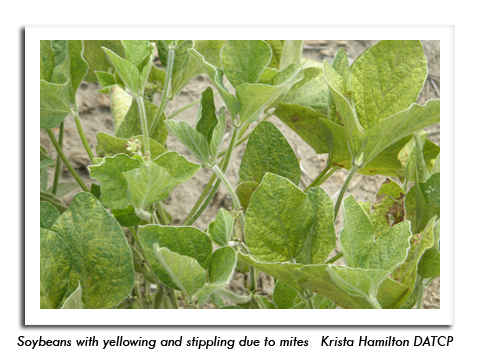
 |
|
|
Soybeans
Volume 57 Number 21 Date 11/08/2012 SOYBEAN APHID - The twelfth annual survey documented the lowest densities in the history of soybean aphid in Wisconsin. Examination of 164 soybean fields, once in July and again in August, found an exceptionally low state average of only three aphids per plant during the first half of the survey and a count of seven per plant in August. The previous lowest state average was 11 aphids per plant in 2004. An economic population of 568 aphids per plant was found at one St. Croix County site, while all other fields surveyed contained fewer than 58 per plant. Probable explanations for the scarcity of aphids this year include intense heat and extensive chemical treatment of fields for two-spotted spider mites, which also reduced aphid numbers. TWO-SPOTTED SPIDER MITE - Prolonged extreme heat and rainfall shortages contributed to widespread spider mite problems this season. Numerous fields showing severely bronzed, stippled leaves, and in extreme cases, leaf drop, were noted in all parts of the state in July and August. The problem was most pervasive in southern and central Wisconsin, areas most impacted by this summer's drought. A large percentage of soybean acres required one or more treatments for mite control before infestations diminished in late August due to chemical intervention and intermittent rainy weather. This pest was the leading arthropod threat to Wisconsin soybean production in 2012. -- Krista Hamilton, DATCP Entomologist PHYTOPHTHORA ROOT ROT - DATCP plant pathologists surveyed soybean fields for seedling root rot diseases from May 29-July 2. Of the 49 root samples collected, eight tested positive for Phytophthora sojae (16%), a common cause of soybean root and stem rot. A second, newly described Phytophthora species was identified from three samples (see Looking Ahead section). All root tissues also tested positive for Pythium. The 2012 P. sojae incidence rate of 16% compares to 4% last year, 27% in 2010 and 18% in 2009, and is low relative to the rate in 2010 when wet spring weather favored root rot development. NEW SOYBEAN VIRUS - The UW-Madison and DATCP Plant Industry Lab confirmed in October the first detection in Wisconsin of soybean vein necrosis-associated virus (SVNaV), a tospovirus potentially transmitted by soybean thrips. The virus was isolated from soybean leaf samples collected in September. Symptoms include yellowing (chlorosis) and browning (necrosis) of the leaf veins and leaves. SVNaV was first reported from Tennessee in 2008 and subsequently has been detected in Arkansas, Kentucky, Missouri, Wisconsin and Ontario, Canada. Additional research is needed to determine if SVNaV is a yield-reducing threat to the state's soybean industry. -- Anette Phibbs, DATCP Plant Pathologist 





|
|
|